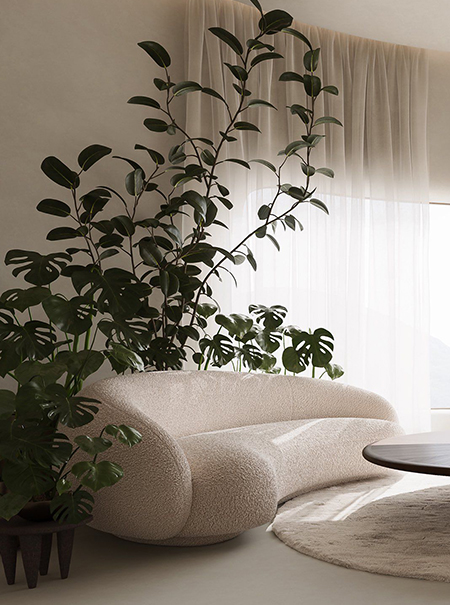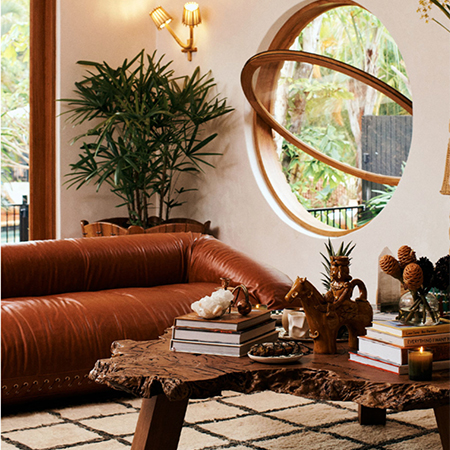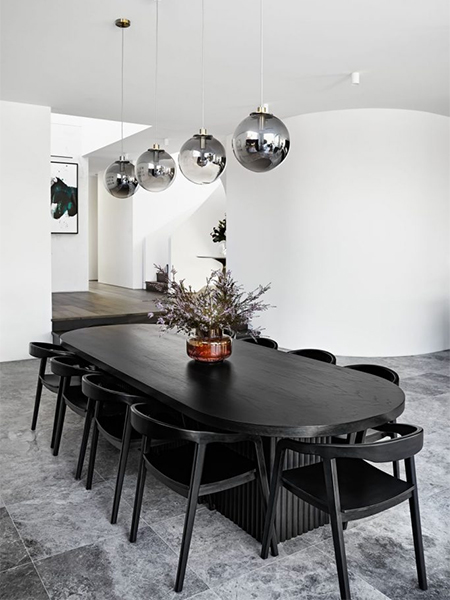Sanctuary and Progress - How our homes have evolved and What 2022 has to teach us in interior design
Trends are more than a flight of fancy of the world's most powerful brands or popular influencers. They are reflections of our needs, and within interiors often reveal a society's changing desires and beliefs.
22/12/2021
The homes of 2021 and 2022 have shifted to reflect our new practices of holding the home at the centre of our lives. Through incorporating our memories, technology and nature we have created spaces that are sanctuaries for our souls to rest and recharge and spaces where we can express important aspects of ourselves that make us so unique.
Creative behavioural strategist focused on designing interior spaces - Kim Williams shares her top insights into the trends that will influence our world in 2022 and the behavioural motivators behind them.
Rise of virtual reality
The last year has seen a massive increase in our need to make virtual connections as we try to substitute our social nature in a time where connecting in person is not necessarily safe. Our need to connect our online behaviour with our physical space is evident in the new technologies that help integrate these two worlds, such as the increase in AI in our domestic spaces.
Existing in these new virtual realities for more of our time every day has also given us new insights into our own behaviour thanks to the tracking algorithms they are built on. This is leading to a higher degree of self-reflection - especially among businesses - than ever before.
Seeking refuge
Our need to find refuge has translated into creating more spaces to recharge, to be spiritual and to make our homes the sanctuaries at the centre of our lives. The rise of the DIY industry when looking at home improvement also speaks to our need to be mindful of how we infuse our identities into the items that make up our sanctuaries.
Aspects like designing spaces for privacy and using touchless technology will dominate 2022. Creating zones in our home spaces, workspaces and public spaces will become essential to living in line with our new consciousness surrounding our health.
The return of natural textures that help us self-soothe and connect will continue to rise in 2022. As with the emergence of the fourth wave, we continue to create new opportunities in our spaces that facilitate new ways of connection until a return to more social human connection can be made.
Nostalgia
The need to bring memory into our spaces is deeply rooted in our desire to bring the happiness of our past into our physical present. Over 2021, this materialised as bringing in smaller elements of nostalgia such as items associated with happy holidays, personal history or icons of decades past that we shared a fondness for.
The return of colour and expression in our spaces over 2022 will likely continue to operate off of nostalgic inspiration. In furniture, for example, we expect to see more rounded objects and repurposing of pieces from the ’70s and ’80s. Our connection with these specific eras is interesting when you consider that they were defined by being full of new voices and had a very transitional nature. An element many of us find comfort in the midst of so much uncertainty.
The recent resurgence and repurposing of older music by the youth is further evidence of the comforting nature of those times, and has made for an extremely interesting space where today’s technology and last millennia music come together.
Individualism
Our need to be seen, heard and not be overcome by the anxiety of the transitional period the world is going through is powerful. We have a longing to be sentimental and expressive in our spaces rather than reserved. The role of the designer in the individualism context is less about following trends and more about creating different types of meaningful designs for each individual that facilitate a specific kind of experience.
What will become very significant in 2022 is that people find their voice in their spaces. It’s going to be a very creative time for everyone and we will see the return of colour even if subtly at first. And while natural tones will be muted, they will be undeniably present. Sea blues, jewel-like oranges and burgundies, soft pastel yellows and pinks, mauves and energising greens that offset earthy tones. We will also see the return to the warm white as we move away from the starkness of a bright white in our search to be soothed.
Connection to nature
Over 2021 we have seen massive growth in biophilic elements that help us return to our connection to nature. Over 2022 we will bring nature into nearly every element of our homes in new intentional ways. In our furniture we will have greater mindfulness of the sustainability with which it is made and our need to tread lightly on the planet will eventually assimilate into the core ideals of South African design as it has begun to do in Europe.
The return of the local product to our spaces in fabrics and items. Partially influenced by the transport issues due to Covid, and partially our wanting to create more meaning in our spaces – and create community and social economy to keep small businesses going.
Escapism
Our need for escapism, specifically through technology will continue to grow. The evolution of the role of the interior designer will be one where we are expected to create experiences within spaces, not just spaces. The emergence of fluidity between virtual space and real space as technology advances will likely play out in our spaces first in the kinds of materials we’ll see. Futuristic, shiny, chrome, mirrored surfaces and translucency are all set on an upwards trajectory.
Productivity in the home and clearly delineating private and professional space will also become key. Evolving into a more hybrid working model, with new kinds of collaborations in shared spaces, such as apartment buildings that have shared workspaces.
Meaningful living
As we saw in 2021, mindful living is about real healing, feeding our souls, and the layering of emotion into our spaces to create spaces to rejuvenate and to be more spiritual. Again we will see a return to natural materials, fabrics and crafts. We will become much more focused on our spirituality and try to find meaning in our surroundings by deepening our spaces.
The purpose of refreshing our space is to feed our energy. Our spaces set the tone for us to be calm, to be creative, to be connected and to recharge. Designing spaces intentionally to support mental health and productivity through the use of mindful living practices and zoning combined with the decluttering of the unnecessary, helps us preserve our energy and create richer spaces in which to thrive.
For more Insights from Kim Williams, sign-up for her blog at www.kimwilliams.co.za or follow her on Facebook and Instagram @kim_williams_design.













